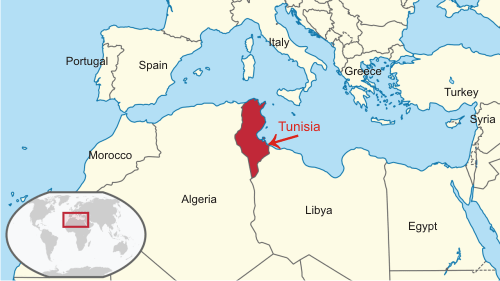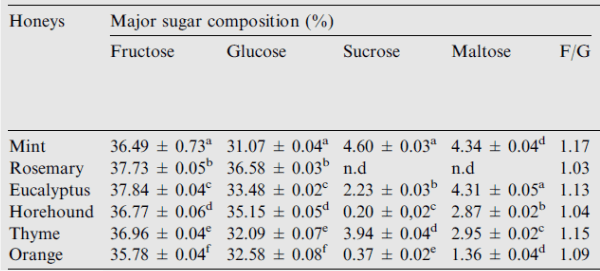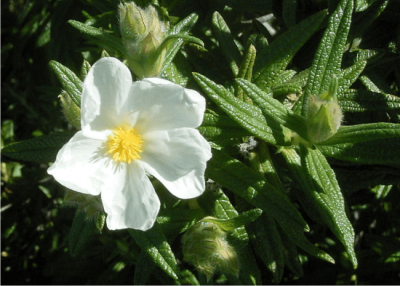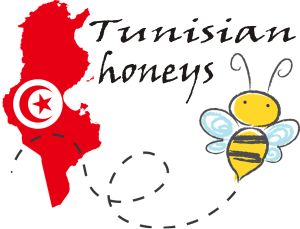Each country has its own specific flora and even the species are the same, there still are particularities triggered by geographical conditions: weather, soil type, pollution, human intervention with chemical fertilizers or pesticides and so on.
The most frequent honeys we find in Tunisia are from robinia, lavandula, salvia, medicago, hedysarum, onobrychis, calluna, eucalyptus, orange, thyme, mint, rosemary, and horehound. These are all very common with the exception of honey coming from horehound – o plant related to mint, with high medicinal properties.
Tunisia is a small country in North Africa, with an area of 163,610 km² and a population of around 11 billion. It is situated on the Mediterranean coast of North Africa, midway between the Atlantic Ocean and the Nile Delta. The country has a Mediterranean clime in the North, with mild rainy winters and hot, dry summers and desert in the South.
 picture credit TUBS via wikimedia commons
picture credit TUBS via wikimedia commons
Tunisian flora is different than the one common in Europe or the US. That is why, even if we speak of the same floral source of a honey, they can have considerable differences – like it is for example the case of mint honey, which is a light honey worldwide, but of a very dark color in Tunisia.
Honeys can be differentiated through some major physicochemical parameters such as pH, moisture, sugar composition and hydroxymethylfurfural (HMF) contents, color, acidity and specific conductivity. These are used as quality indicators that characterize each individual honey variety.
The study “Physicochemical and bioactive properties of six honey samples from various floral origins from Tunisia“, conducted by Amel Boussaid et al. and published by the Arabian Journal of Chemistry in 2014, presents the physicochemical indicators of 6 less studied types of honey met in Tunisia: eucalyptus, orange, thyme, mint, rosemary, and horehound.
The results of the analyses were reported as means± standard deviation.


All the samples were within the range of the required standards (620%) according to the International Regulations of Quality (Codex Alimentarius Commission, 2001).
The highest water content was found in mint and orange honeys, but it has to be kept in mind that water content depends on various factors, such as the harvesting season (and how was that specific year of harvest), the degree of maturity reached in the hive, and the geographic and environmental factors.
The HMF values represent an excellent indicator of honey freshness and purity (as specified in the Codex Alimentarius, 2000). If honey has a high concentrations of HMF this means that it was overheated in the process of either filtration, or commercial pasteurization or it was kept in poor storage conditions, like light and warm environments. Low values may be naturally contained in honey due to either nectar source which may influence its formation (Fallico et al., 2004; Terrab et al., 2002; Meda et al., 2005) or the fructose:glucose ratio (Doner, 1979).
The International Trade Guidelines impose a limit of maximum 40 mg/kg honey. Tunisian honeys ranged from
12.07 to 27.43 mg/kg.
The electrical conductivity of honey is closely related to the concentrations of minerals or total ash, salts, organic acids and proteins. The highest value was found in orange honey. Yet, its mineral content is not the highest (even far from it) and this is something that is common to all orange honeys, no matter the geographical origin. Here are the mineral composition found in the studied samples:


read more on the mineral and trace elements content of honeys.
As for the sugars presents in the six samples of honey, the predominant sugar was, as in most honeys, fructose
followed by glucose, while sucrose and maltose were present in low amounts.
A high sucrose concentration usually means a premature harvest of honey as sucrose has not been fully developed to glucose and fructose by the action of invertase (Ozcan et al., 2006). But the sucrose amount of all studied Tunisian honey samples was below the maximum conventional limit of 5%, as recommended by the European Community (European Economic Commity, 2002).
 F/G represents the fructose/glucose ratio
F/G represents the fructose/glucose ratio
Read more about Sugars in honey and why honey is so sweet
The total phenolic substances were higher in mint honey (119.42 mg Gallic acid/100 g honey), followed by rosemary (89.31 mg Gallic acid/100 g honey), thyme (63.08 mg Gallic acid/100 g honey), orange (63 mg Gallic acid/100 g honey), horehound (42.40 mg Gallic acid/100 g honey) and eucalyptus (32.17 mg Gallic acid/100 g honey). (Why is honey so valuable? What are polyphenols and what are they good for?)
As for the total flavonoid content, mint honey contained a significant amount of total flavonoids (22.45 mg CE/kg honey), followed by rosemary (16.24 mg CE/kg honey), thyme (14.77 mg CE/kg honey), orange (11.12 mg CE/kg honey), horehound (11.02 mg CE/kg honey), and eucalyptus (9.58 mg CE/kg honey).
Orange honeys have the highest carotenoid content (4.72 and mg b-carotene/kg of honey), followed in rank by mint, Horehound, eucalyptus, thyme and rosemary honeys respectively.
Mint honey possessed excellent antioxidant properties!
The antioxidant activity was measured by DPPH radical scavenging activities and it showed that mint honey has a significantly (p <0.05) higher (11.08 mg/mL) scavenging activity than all other honey samples (read more about Natural antioxidants in honey. Do we really need antioxidant supplements?)
In Tunisia honey is traditionally used for wound healing and diseases of the gut.
Propolis from Tunisia
Accordint to MARTOS, I et al in a study from 1997, in Tunisia, where poplars are not quite available, leaf exudates of some Cistus spp. act as propolis source for honey bees. In the Sonoran desert, bees are gathering propolis from Ambrosia deltoidea and Encelia farinosa (WOLLENWEBER, E et al., 1997).
 Cistus_monspeliensis, picture source wikimedia commons
Cistus_monspeliensis, picture source wikimedia commons
An important characteristic of the cistus leaf exudate is the presence in high amounts of a the flavonoid, myricetin 3,7,4‘,5‘-tetramethyl (Isabel Martos et al, 1997) and quercentin.
![]()
• There are 16,000 beekeepers in Tunisia, but most of them are only amateurs, who care for their hives in their spare time.
• The annual national average of honey productivity is 8 kg per hive, whereas the European equivalent is 30 kg per hive.
• According to the National Institute of Statistics, in 2015 Tunisia’s honey exports were worth $52,500; the country imported $1.1 million of honey from China and Spain.
Read more about propolis.
=====
References:
Boussaid, A. et al., Physicochemical and bioactive properties of six honey samples from various floral origins from Tunisia. Arabian Journal of Chemistry (2014), http://dx.doi.org/10.1016/j.arabjc.2014.08.011
Images from featured picture source pixabay.comH




